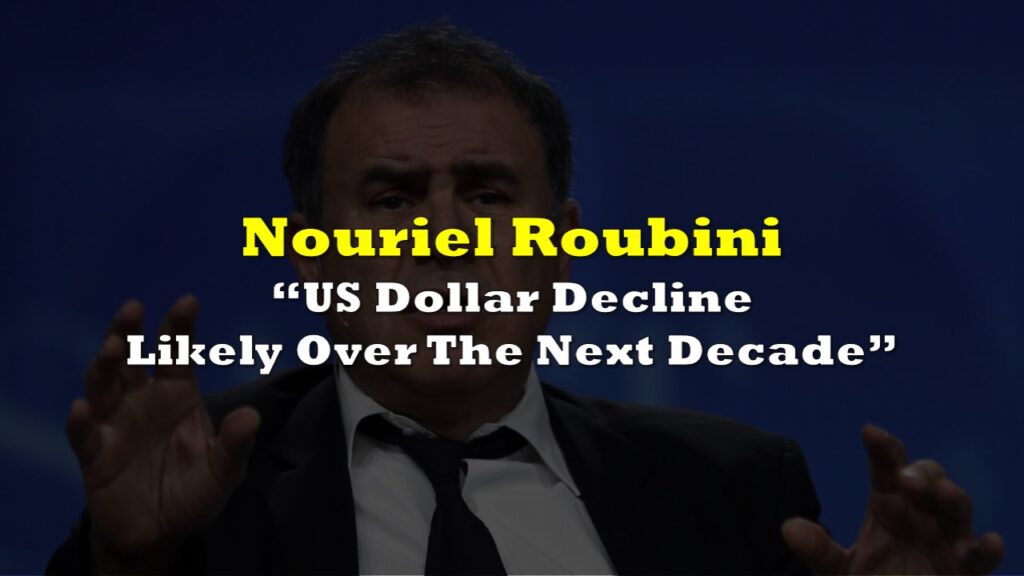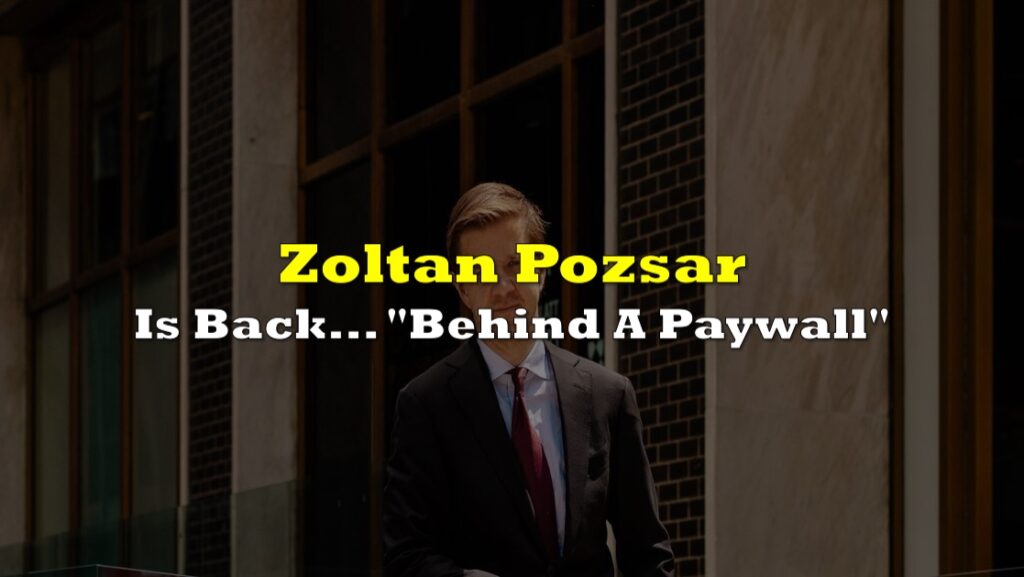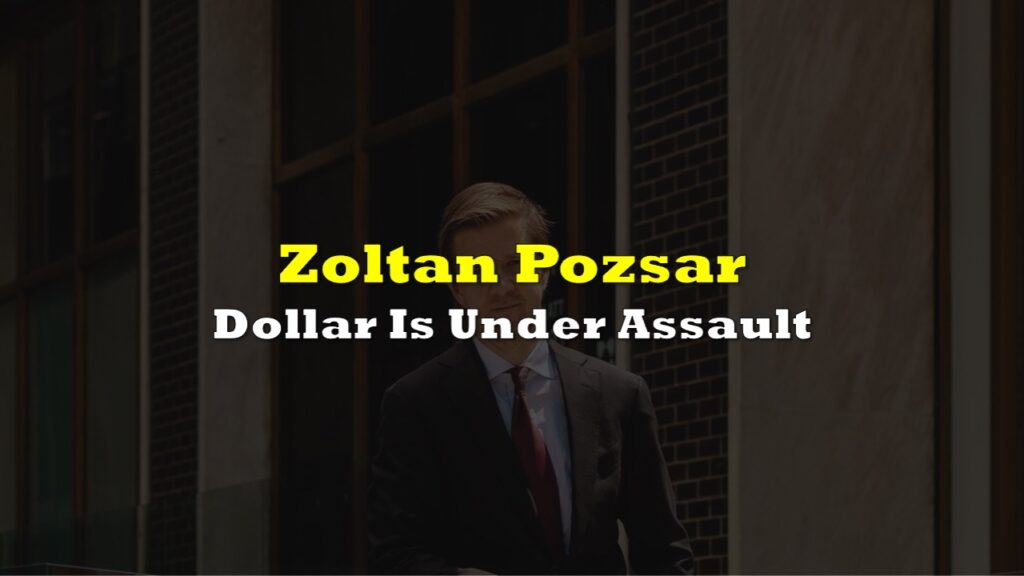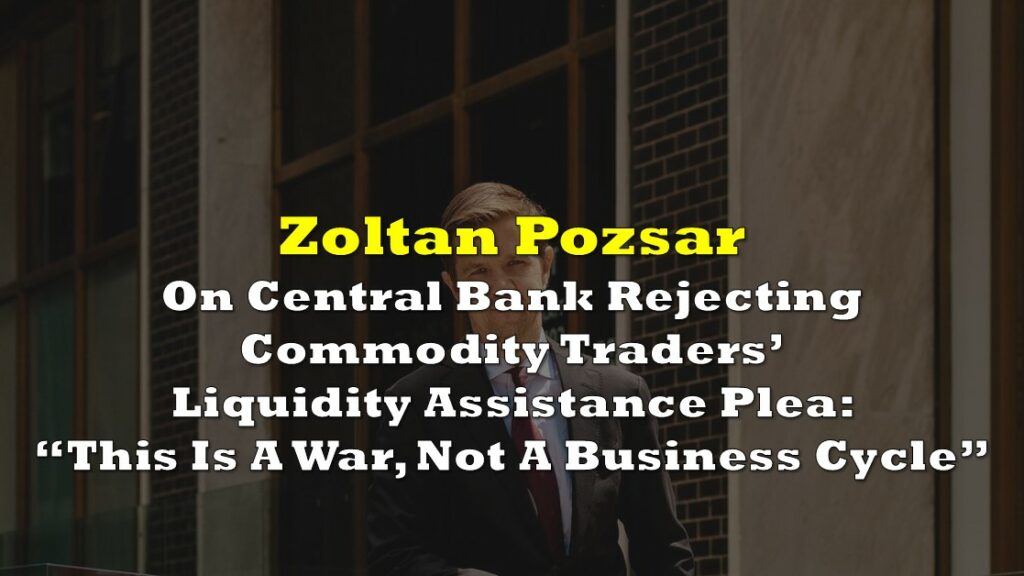Continuing on his Bretton Woods III theory, Credit Suisse contributor Zoltan Pozsar laid out the possible chokepoints in a new economic world order tied to commodities.
“Our aim with this review is to build an “inventory” of triggers that may lead to “G-SIB score-like” chokepoints to the flow of commodities,” said Pozsar.
He also said that dealing with these chokepoints would entail a lot of money. While quantitative tightening “is certainly happening in the near-term,” Pozsar also believes that the US Federal Reserve will do quantitative easing by summer 2023.
Another must-read
— The Passenger (@gordonschuecker) May 1, 2022
9 Commodity Chokepoints and QT
(1) neon gas
(2) neon transportation
(3) NG
(4) oil boycott
(5) VLCC shortage
(6) VLCC fleet overtake
(7) Strait of Hormuz
(8) QT (quantitative tightening)
(9) SLR (Statutory Liquidity Ratio)
1/9https://t.co/E4gf4kdikn pic.twitter.com/9OzSlzhO43
Neon
For the first set of chokepoints, Pozsar described that these are tied to the commodity of neon. Starting with naming the biggest steelmaking plants in Ukraine and explaining that neon gas is an important byproduct of the steelmaking process, he theorized that events related to the production of this commodity could be a potential chokehold for the world economy.
“The bigger the steel plant, the more air separation they do, and the more air separation they do, the more neon gas they get,” he said. “Big steel plants are usually not the companies that purify the non-oxygen, non-nitrogen “parts” of air into component gases. Rather they typically sell the residual gases in bulk to companies that further separate them into components, like neon gas, and then sell them to the largest consumers of neon, which are chipmakers.”
Pozsar said further that “chipmakers account for about 75% of global demand for neon.” With two of the top five largest neon gas manufacturers in the world situated in Ukraine, the unrest in the region can lead to another potential chokehold: the transport of neon.
“Plants can either produce neon but we can’t get neon to the Far East, or the plants are destroyed or unmanned and can’t produce neon period,” he said.
The neon shortage hysteria is silly. Ukraine went from 70% to 50% of neon gas production in a few years and will go to zero quickly. Why? Because neon is not a natural resource bound by geography. It can be extracted from air, from anywhere and plants are already being set up.
— Marko Papic (@Geo_papic) May 2, 2022
Natural Gas And Crude Oil
The continuing Russia-Ukraine war and the global sanctions attached to it have manifested in another set of commodity-related chokepoints, according to Pozsar.
He believes that the natural gas pipelines would be the third chokepoint. With Russia demanding payments for its natural gas exports be made in rubles, the European customers are having a hard balancing act in keeping their lights on while also maintaining their stand in the international community regarding the geopolitical conflict in the region.
“Everyone understands Germany’s and Italy’s reliance on Russian gas, and the EU’s reluctance to pay in rubles heightens the risk of disruptions to gas supplies,” said Pozsar.
The same goes for crude oil exports. Many governments have started boycotting Russian oil and have laid out plans in making their countries energy independent. On the other hand, some major economic players have also been angling to replace the power vacuum left by the boycott.
For Pozsar, this situation leads to two possible chokeholds:
“First, a supply chokepoint if the entire world boycotts Russian oil and Russia is forced to shut down its oil fields, we lose 7 million barrels per day in exports. Second, a shipping chokepoint if India and China buy Russian oil and we don’t have enough VLCCs to ship the oil,” he explained.
While India and China have increased their Russian oil imports, Pozsar also said that if they won’t be able to take all the commodities due to VLCC bottlenecks, Russia might be forced to scale down its production.
“Either way, Russia will export less, perhaps 3-4 million barrels less per day, and the [reserves] won’t be able to cover that kind of a shortfall,” he added.
This is also related to the sixth chokepoint according to Pozsar: China potentially controlling the world’s largest tanker fleet.
“As a matter of national security for the West, government officials should be cognizant of the non-zero probability risk of a Chinese takeover of the combined Frontline-Euronav entity. The U.S. or the EU do not have any tanker fleets, much like they do not have any chip foundries, or neon gas supplies for chips,” he explained.
The Strait of Hormuz
But in what Pozsar refers to as “the mother of all chokepoints”, the Strait of Hormuz is where a lot of Middle Eastern oil passes through. This is also the potential route for natural gas transport from the Middle East should the EU decide to shift the source of its energy imports from the region.
Source: Business Insider
“Alan Greenspan used to worry about the Strait of Hormuz while he was [US Federal Reserve] Chair and maybe it’s time to dust off some of those worries. Volcker had OPEC. Greenspan had Iraq. Powell has Russia. OPEC and Iraq were about oil only, but the present conflict is about oil, VLCCs, natural gas, neon gas and chips… and who knows what else will come,” Pozsar added.
QT and SLR
For the last two chokepoints, Pozsar identified constraints to QT and liquidity.
“Spot price spikes for commodities with large derivative markets behind them (oil and gas) can cause funding stresses for commodity traders and broker-dealers, and a shutdown of supply chains, either because there is no oil, gas or neon can cause a similar “tsunami” of credit line drawdowns that a shortage of workers caused when governments enforced quarantines globally during March 2020,” said Pozsar.
But he reiterated that in the commodity-based new world order, central banks can only deal with nominal but not real chokepoints.
“It is easy to call force majeure on QT and to exempt banks from the SLR (temporarily) to address the liquidity issues that might arise from chokepoints #1 – #7, but central banks won’t be able to do anything about the chokepoints themselves,” he ended.
Hence, he believes that QT days will be for the short-term and the Fed will be doing QE again by summer 2023.
Information for this briefing was found via Credit Suisse. The author has no securities or affiliations related to this organization. Not a recommendation to buy or sell. Always do additional research and consult a professional before purchasing a security. The author holds no licenses.









